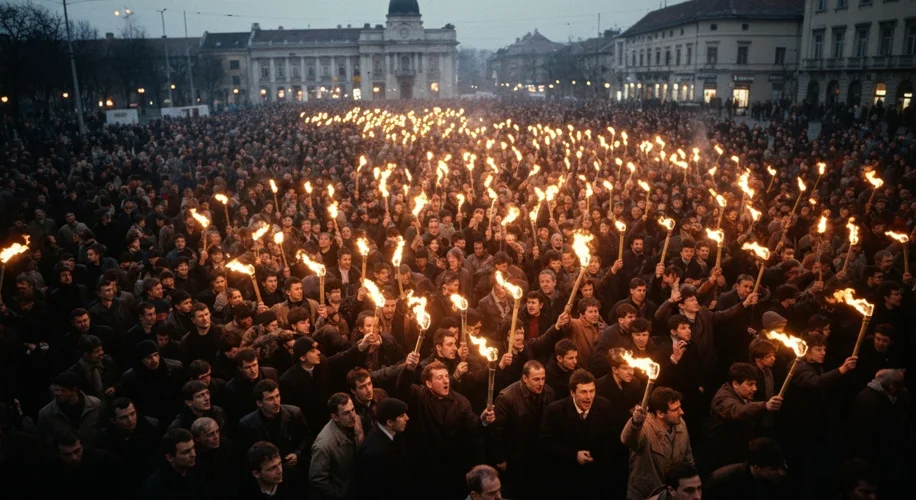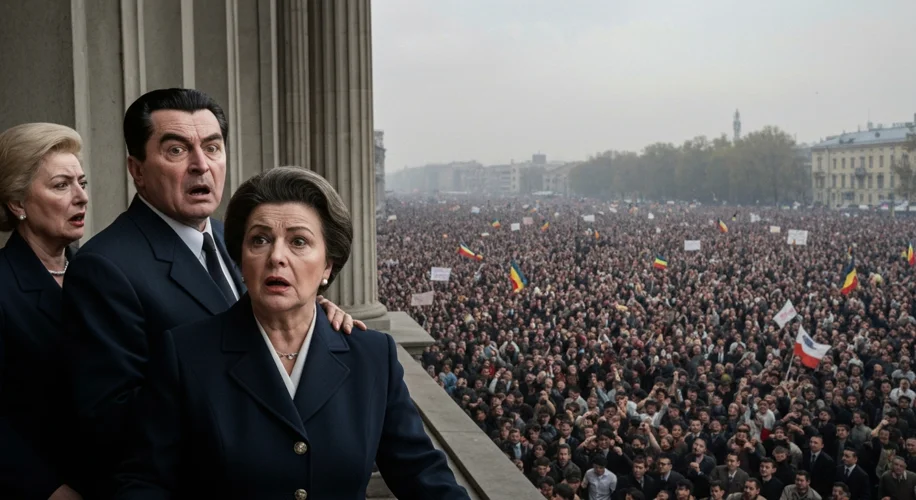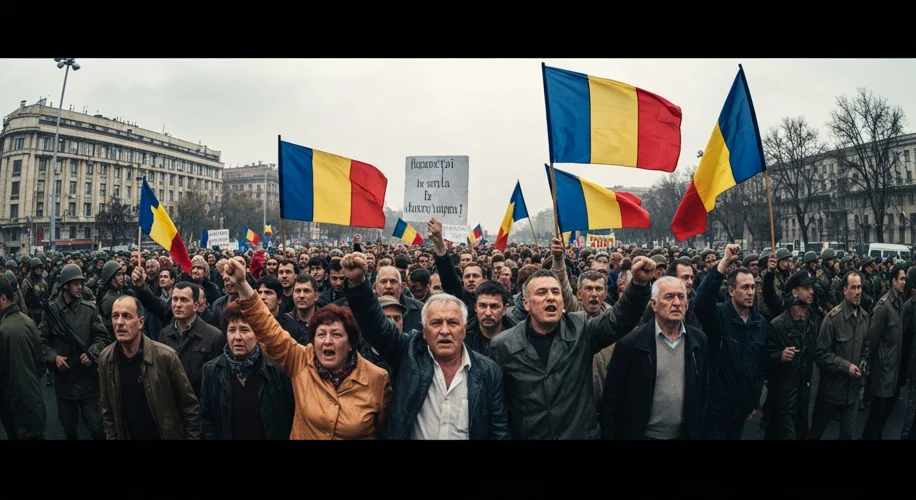The air in Bucharest crackled with a tension that had been building for decades, a suppressed roar waiting for the slightest tremor to unleash its fury. For 45 years, Romania had lived under the iron fist of Communism, and for nearly 24 of those years, under the absolute, suffocating rule of Nicolae Ceaușescu. His regime was a fortress of paranoia, built on secret police, pervasive surveillance, and the systematic suppression of any dissent. Food was scarce, electricity was rationed, and the once vibrant culture of Romania was systematically starved in favor of a cult of personality around a man who seemed to view his nation as a personal fiefdom.
But even the most formidable fortresses have their cracks. In late 1989, the winds of change were blowing across Eastern Europe. The fall of the Berlin Wall, the Velvet Revolution in Czechoslovakia, and the toppling of communist regimes elsewhere were not lost on the Romanian people. The spark that would ignite Romania’s own inferno came not from the capital, but from the western city of Timișoara, a place known for its multicultural heritage and a spirit of independence that had been simmering for years.
It began on December 16, 1989. László Tőkés, a Hungarian Reformed pastor in Timișoara, was ordered by the Securitate (the secret police) to relocate. His crime? Preaching sermons that were critical of the regime. His congregation, and then the wider city, rallied in his defense. What started as a protest against Tőkés’s eviction quickly morphed into a wider demonstration against Ceaușescu’s brutal dictatorship. The streets of Timișoara filled with people chanting, “Jos Ceaușescu!” (Down with Ceaușescu!).

The regime’s response was swift and horrifyingly predictable. Ceaușescu, watching from his opulent palace, ordered the military and Securitate to crush the uprising. On December 17th, the security forces opened fire on unarmed civilians. Blood flowed in the streets of Timișoara, turning a protest into a massacre. News of the brutality, carried by smuggled tapes and word-of-mouth, spread like wildfire, galvanizing a nation that had long suffered in silence. The initial fear began to be replaced by a burning rage.
The revolution then spread like a contagion. On December 20th, demonstrations erupted in Bucharest. The capital, accustomed to the iron grip of control, was suddenly alive with defiance. University students, workers, and ordinary citizens poured into the streets, their numbers swelling with each passing hour. The Securitate, accustomed to striking fear into the hearts of citizens, found themselves facing a wave of popular anger that was too vast to contain. Defections began to occur within the army, with soldiers refusing to fire on their own people, some even joining the protesters.
Ceaușescu, in a desperate attempt to regain control, made a fateful decision. On December 21st, he appeared on the balcony of the Central Committee building to address the nation, expecting a show of support. Instead, he was met with a barrage of shouts, jeers, and the unmistakable roar of a people who had finally had enough. The carefully orchestrated spectacle of adoration dissolved into chaos. The images of Ceaușescu’s stunned, almost bewildered face as the crowd turned against him, broadcast live on television, were a death knell for his regime. It was a moment of profound historical significance, a visual testament to the power of a people pushed too far.

The following days were a blur of intense fighting. While much of the army had defected, pockets of loyalists, particularly Securitate forces, continued to resist, leading to violent clashes in cities across Romania. The death toll, initially uncertain, mounted rapidly. On December 22nd, Ceaușescu and his wife Elena fled Bucharest by helicopter, only to be captured later that day. Their brief reign of terror was coming to a swift and ignominious end.
In a hastily arranged trial by a military tribunal on Christmas Day, December 25, 1989, Nicolae and Elena Ceaușescu were found guilty of genocide and crimes against humanity. They were executed by firing squad that same day, their bodies left unburied for days. The bloody end to their rule symbolized the dramatic and violent conclusion of one of the most oppressive regimes in Eastern Europe.
The Romanian Revolution, in its brutal swiftness, left an indelible mark on the nation. While it brought an end to decades of dictatorship and ushered in a new era of freedom, the transition was not without its challenges. The violence, the loss of life, and the subsequent political and economic upheaval left deep scars. Yet, the revolution stands as a powerful testament to the human spirit’s unyielding desire for liberty, a stark reminder that even in the darkest of times, the will of the people can ultimately prevail.

